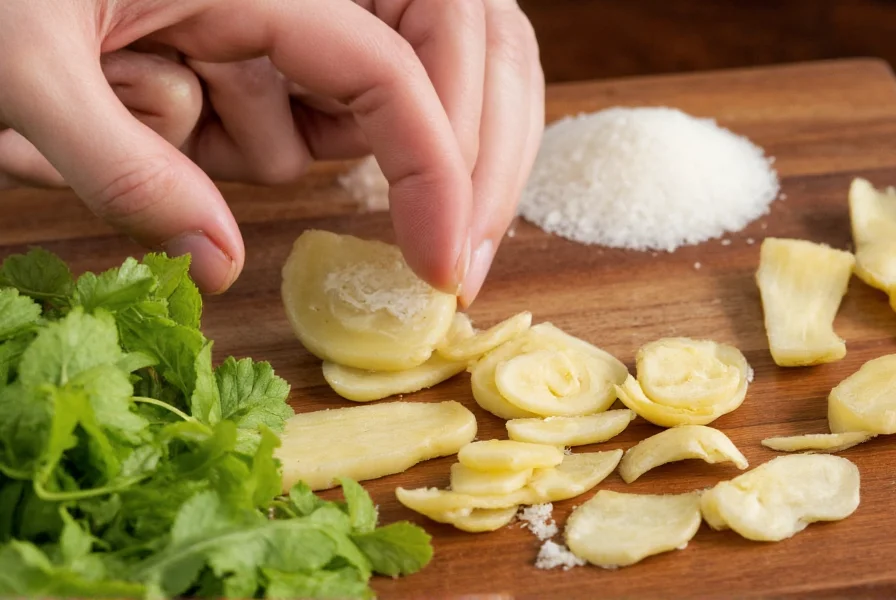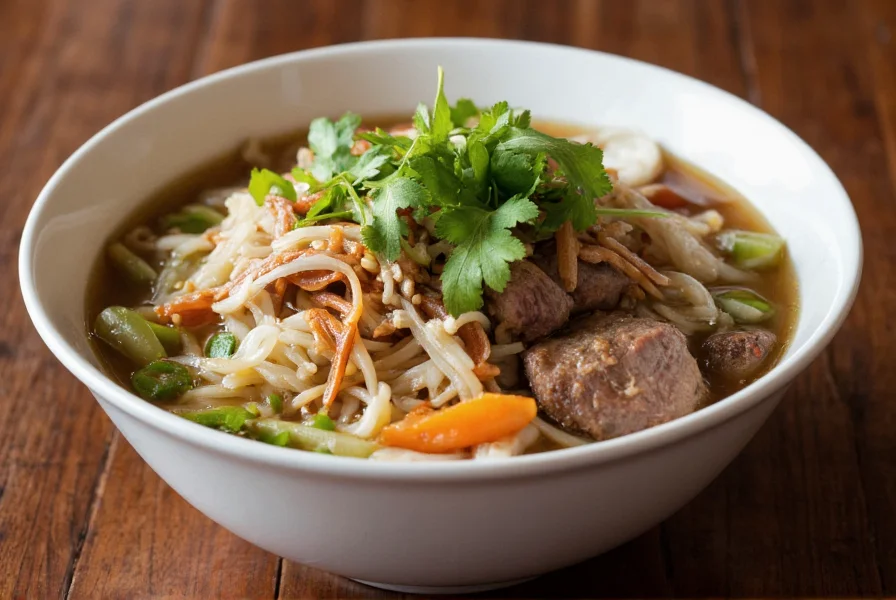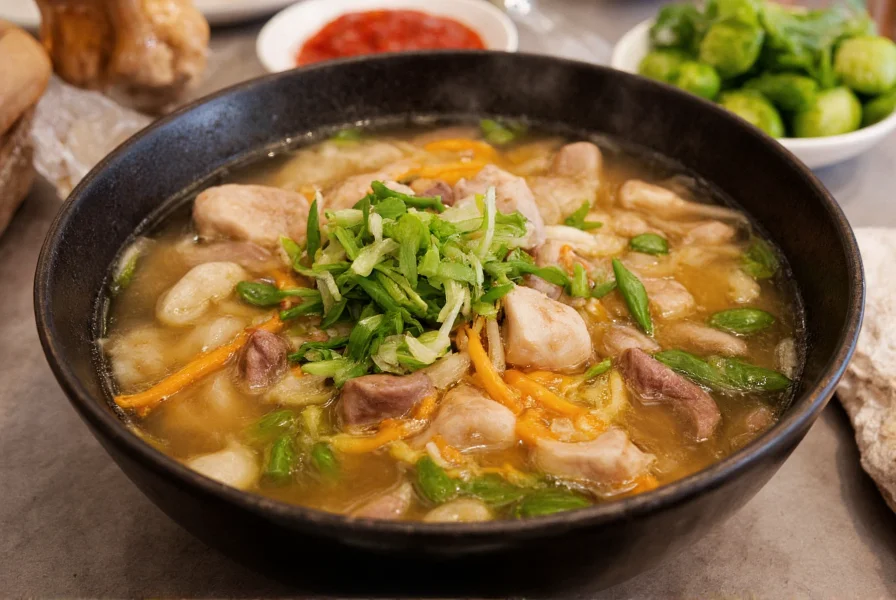Ginger pho represents a flavorful adaptation of Vietnam's national dish, emphasizing the bright, warming qualities of fresh ginger while maintaining the essential structure of traditional pho. This variation has gained popularity both in Vietnam and internationally as diners seek more pronounced ginger notes in their comfort foods. Unlike standard pho recipes that use ginger as just one component among several spices, ginger pho makes this root the centerpiece of the broth's flavor profile.
The Cultural Significance of Ginger in Vietnamese Cuisine
Ginger has been integral to Vietnamese cooking for centuries, valued not only for its flavor but also for its medicinal properties. In traditional Vietnamese medicine, ginger is considered a "warming" food that aids digestion and circulation. When exploring what makes ginger pho special, understanding this cultural context is essential. Vietnamese cooks traditionally use young ginger for its milder, juicier texture in fresh preparations, while mature ginger provides the deeper, spicier notes perfect for broths like ginger pho.

How Ginger Pho Differs From Traditional Pho
The primary distinction between ginger pho and traditional pho lies in the spice composition and preparation technique. Traditional pho broth relies on a balanced quartet of spices: star anise, cloves, cinnamon, and cardamom, with ginger playing a supporting role. In ginger pho, the ginger-to-spice ratio shifts dramatically:
| Characteristic | Traditional Pho | Ginger Pho |
|---|---|---|
| Primary Aromatics | Star anise, cloves, cinnamon | Fresh ginger (dominant) |
| Ginger Quantity | 1-2 inch piece, charred | 3-4 inch piece, often uncharred |
| Flavor Profile | Complex, sweet-spiced | Bright, citrusy, warming |
| Broth Color | Clear amber | Light golden with yellow hue |
When considering ginger pho versus regular pho, the ginger-forward approach creates a broth that's particularly soothing during cold weather or when combating minor illnesses. The pronounced ginger flavor also makes it an excellent choice for those seeking digestive benefits from their meals.
Health Benefits of Ginger in Pho Broth
The inclusion of generous amounts of ginger in this pho variation delivers notable health advantages. Research shows that ginger contains gingerol, a bioactive compound with powerful anti-inflammatory and antioxidant effects. When preparing healthy ginger pho at home, you're creating a meal that:
- Supports digestive health by stimulating saliva and bile production
- May reduce muscle pain and soreness
- Contains compounds that might help lower blood sugar levels
- Provides natural relief from nausea and morning sickness
- Offers anti-inflammatory benefits that may help with osteoarthritis
Unlike medicinal ginger preparations that can be overpowering, ginger pho delivers these benefits in a balanced, food-based format that's both therapeutic and delicious. This makes it an excellent example of how Vietnamese cuisine combines flavor and wellness.
Perfecting Ginger Pho Broth: Essential Techniques
Creating authentic ginger pho requires specific techniques that maximize flavor extraction while maintaining broth clarity. Professional chefs preparing restaurant-quality ginger pho follow these critical steps:
- Select fresh, firm ginger with smooth skin and no wrinkles
- Peel thoroughly to remove any bitter outer layers
- Slice against the grain to maximize surface area for flavor release
- Add ginger later in cooking process than traditional spices to preserve volatile compounds
- Maintain gentle simmer (not boil) to prevent bitterness
- Strain ginger after 45-60 minutes to prevent over-extraction of harsh compounds
One common mistake when making ginger pho from scratch is charring the ginger as you would in traditional pho. While charring creates complex caramelized notes in standard recipes, it diminishes the bright, fresh qualities that define ginger pho. For the most vibrant flavor, use raw, uncharred ginger.

Serving Ginger Pho: Traditional Accompaniments
The accompaniments served with ginger pho differ slightly from traditional versions to complement its distinctive flavor profile. While both versions include standard pho garnishes, ginger pho particularly benefits from:
- Fresh lime wedges - enhances ginger's citrus notes
- Thinly sliced shallots - provides sharp contrast to ginger's warmth
- Thai basil - offers anise-like notes that complement ginger
- Bean sprouts - adds refreshing crunch against the warm broth
- Thinly sliced Fresno chilies - amplifies ginger's natural heat
When exploring how to eat ginger pho properly, consider adding these elements in stages. First, enjoy a spoonful of broth to appreciate the ginger's pure flavor. Then gradually add garnishes to experience how each component interacts with the ginger-forward base.
Seasonal Considerations for Ginger Pho
Ginger pho shines brightest during specific seasons, making it a versatile addition to your culinary repertoire. Understanding when to make ginger pho can enhance your dining experience:
- Cooler months (October-March): The warming properties make it ideal for cold weather
- Early spring: Helps combat lingering winter illnesses
- After rich meals: Ginger's digestive properties make it perfect following heavy dishes
- During seasonal transitions: Supports immune system during weather changes
Unlike traditional pho which works year-round, ginger pho's pronounced warming qualities make it less suitable for hot summer months unless served with extra cooling garnishes like mint and cucumber.
Adapting Ginger Pho for Dietary Needs
The versatility of ginger pho extends to various dietary requirements. When preparing ginger pho for special diets, consider these adaptations:
- Vegetarian/Vegan: Use mushroom and vegetable broth with extra ginger and kombu
- Low-sodium: Reduce fish sauce and increase ginger for flavor complexity
- Gluten-free: Naturally compliant when using rice noodles and tamari instead of soy sauce
- Keto: Serve with extra protein and vegetables, omitting noodles
These adaptations maintain the essential ginger-forward profile while accommodating different nutritional needs, making ginger pho one of the most flexible variations of this beloved Vietnamese dish.
Conclusion: The Enduring Appeal of Ginger Pho
Ginger pho represents more than just a variation of Vietnam's national dish—it's a thoughtful adaptation that highlights one ingredient's potential to transform a familiar recipe. Whether you're exploring ginger pho benefits for digestion or simply seeking a comforting meal with distinctive flavor, this variation offers something special. Its growing popularity reflects a broader culinary trend toward ingredient-focused dishes that celebrate single components while maintaining balance. By understanding what makes ginger pho unique, you can appreciate not just its taste but also its place within Vietnam's rich culinary tradition and its relevance to contemporary food preferences.
Frequently Asked Questions
What's the main difference between ginger pho and traditional pho?
The primary difference is the prominence of ginger in the broth. Traditional pho uses ginger as one component among several spices (star anise, cloves, cinnamon), while ginger pho elevates fresh ginger to the dominant aromatic, creating a brighter, more citrusy, and noticeably warmer broth with a distinct yellow hue.
Can I make ginger pho with dried ginger powder instead of fresh?
While possible, dried ginger powder won't deliver the same bright, complex flavor as fresh ginger. Fresh ginger contains volatile compounds that provide the distinctive citrusy notes characteristic of ginger pho. If using powder, reduce the amount significantly (1/4 teaspoon powder equals approximately 1 inch fresh ginger) and add it near the end of cooking.
Is ginger pho spicier than traditional pho?
Ginger pho has a different kind of warmth rather than outright spiciness. Fresh ginger provides a gentle, building warmth that's more citrusy than hot. It doesn't contain capsaicin like chili peppers, so it won't produce the same burning sensation, but the warming sensation may feel more pronounced than traditional pho's subtle spice blend.
How long should I simmer ginger in pho broth?
For optimal flavor without bitterness, simmer fresh ginger for 45-60 minutes in the broth. Longer than 90 minutes can extract harsh compounds. Professional chefs often add ginger later in the cooking process (after the first 2-3 hours of bone simmering) to preserve its delicate flavor compounds, which are more volatile than those in traditional pho spices.
Does ginger pho have significant health benefits?
Yes, the generous amount of fresh ginger provides notable health benefits including improved digestion, anti-inflammatory effects, and potential immune support. Ginger contains gingerol, a compound with antioxidant properties. While not a substitute for medical treatment, regularly enjoying ginger pho can contribute to overall wellness as part of a balanced diet.











 浙公网安备
33010002000092号
浙公网安备
33010002000092号 浙B2-20120091-4
浙B2-20120091-4